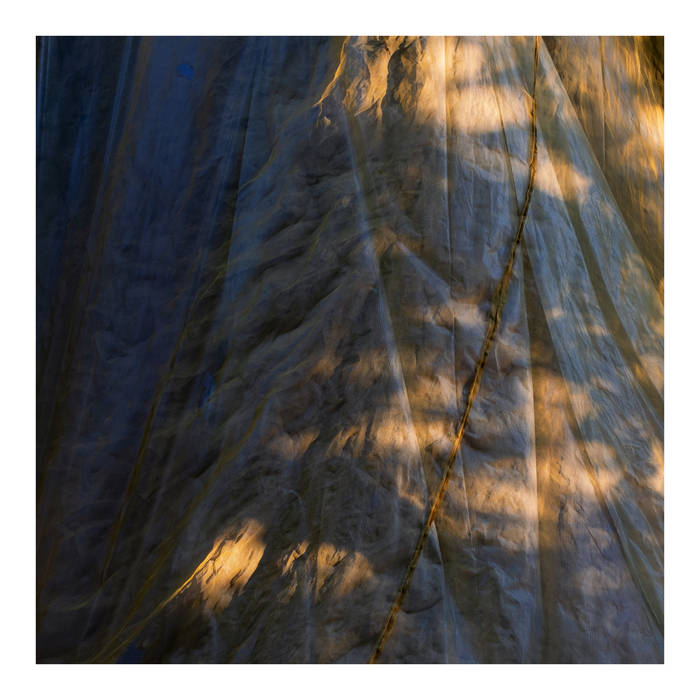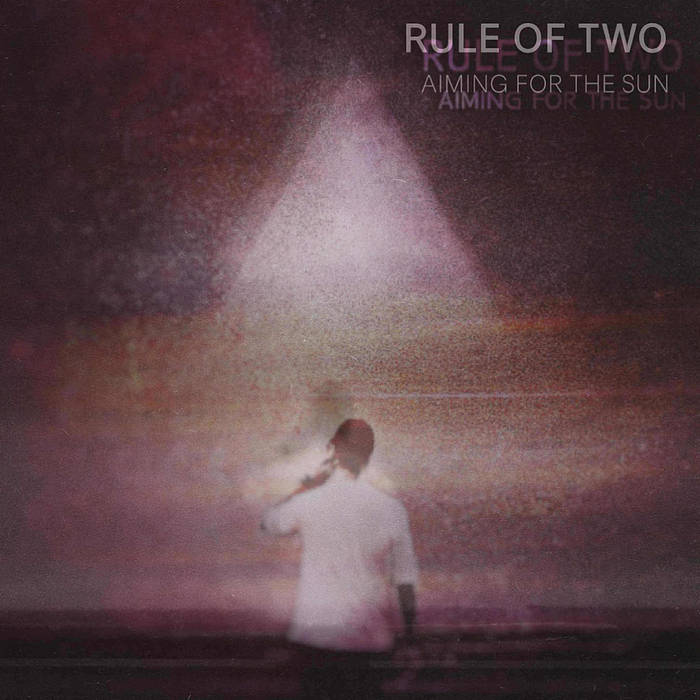Sarattma’s debut full-length, Escape Velocity, is a tale of two albums. Alchemizing inconsolable grief, pain within and without, and the spiritual vagrancy that emerges when the very idea of home undergoes collapse, this is music conceived for the best and the worst of times. Throughout a suite of dynamic instrumental compositions interweaving a bevy of drums and guitars, the post-metal duo presents a Janus aspect: a large jaw set by past musical influences and fair face turned toward an uncertain future for terrestrial kind.
Drummer Sara Neidorf (Aptera, Mellowdeath, ex-The Brian Jonestown Massacre) explains, “Escape Velocity posits illness and pain as an alien invasion of the body,” adding that the album’s process coincided with the late stages of her mother’s battle with cancer. “We dug into our histories, the injustices of the present moment, and all matters of subconscious unrest” when extrapolating the compositions through improvisation. Guitarist Matt Hollenberg (Cleric., iNFiNiEN, Shardik, Titan to Tachyons, Zorn Sonic Universe), reflecting on those days spent at the Neidorf family home hashing out concepts and performing “all sorts of amateur sweaty DIY warrior like stuff” to sculpt the right sound for the record, recalls how crucial the collaborative process was to capturing the spontaneity of those precious moments “in the spirit of existential resilience and gratitude.”
Much like the film Invasion of the Body Snatchers (1956), with which the album shares evident themes, Escape Velocity eschews simplistic narrative in favor of more challenging dialectical truths—that, while ever vulnerable to mortal illness and pain, humanity also is the arbiter of so much violence, itself invasive and appropriative in its misuses of power and resources. Sarattma take to task the quintessential human need for escape, reminding us that no desire is more crucial to imagination and liberation or more prone to aberrant whim and abrogation of responsibility. These deep-ecology overtones are deftly captured in Caroline Harrison’s vivid, psychedelic cover art, which forces us to ask: who is the “alien” here? What remains of the lone “human” figure—cracked visor reflecting a homeworld lost, flesh transmogrified into sprouting leaves of grass—is fittingly ambiguous.
Signs that this mission will entail turbulent circumnavigation abound from liftoff. After 30 seconds of frippery evoking flying saucers of yore, the ozone ignites with a fuzzed-out chord and cross-kit drum fill. The opening title track’s head, an elephantine doom riff, lurches forth, trumpets up and down an octave twice then screams down a half tone, before stretching up once more and falling back upon its rumbling haunches. The riff’s ingenuity hearkens back to the EP Inner Spaces (2017), but sonically this is saltation. Escape Velocity deliciously layers variant guitar tracks exploiting harmonics and blued notes with impressively agile drumming. Furthermore, these songs rarely proceed in anticipated directions. “Escape Velocity” doesn’t launch straight up with incredible speed but takes a more grueling orbital path, as if submitting to prolonged testing of the vehicle’s mechanics and structural integrity. All this atmospheric friction makes the guitars—including standard, bass VI, and bass guitars—too hot! Hollenberg lays down a scorching two-plus minute solo showcasing his noise toys, mutant licks, and freedom to gambol in and out of regimented time, all while riffs underneath transform every few bars, threatening to shake the whole thing apart. In the end, Neidorf commandeers the controls and keeps the ship intact. She plays equally freely, making inventive use of the late half of measures, where you’ll hear her jumping ahead of the beat for impactful counterpunching and cymbal work. Dig how she initiates that blast beat over the last half-measure of the song’s slowest riff, ratcheting up the gears in advance, before stutter-step swaggering into the next grinding section and landing a perfect jump scare snare hit… Who else could maneuver that without capsizing? After returning to the head, the song descends through open-string chords and a plaintive guitar solo before its fade. The album’s lone fade-out may seem anticlimactic, especially for a song played at 11, but perhaps that’s the point. Escape velocity requires a balance of opposed physical forces, whereas our more destructive emotional desires tend to thrash erratically and falter of their own unchecked inertia and gravity. Resisting closure, the opening track leaves the asymptotic impression of a difficult emotional journey interminably underway.
If you like jump scares, then check out “Theraphosidae.” For all their media exploitation, tarantulas would just as soon avoid humans—that is, until we start fucking with their habitats. The layered parts opening this track convey that brilliantly. Imagine a tarantula crawling toward you at an odd yet predictable pace, 7—or is it 8?—legs at a time, pausing for any danger before moving again; however, just as a false sense of security settles in and you look away, the spider leaps forward, taking 9 steps, and—surprise!—it’s directly behind you. So unfolds an ominous riff, while spooky cleans played higher on the neck and cymbals tap out ambient background movement. Once the djenty bass VI line lays down its rubbery groove, the track spotlights the modularity of Hollenberg’s riffs, capable of expanding, contracting, or rearranging themselves at will, while Neidorf chops it up underneath with quantum maths. Following some paranoiac slide leads, Hollenberg soars through figures with a John McLaughlin-esque attack before unleashing an inverted pedal-style riff of web-tangling hammer-ons punctuated by bass notes unpredictably pouncing over Neidorf’s impeccable snare pulse. It’s an air-guitarist’s delight!
But you really must experience Escape Velocity in full to understand its depth, especially in later tracks where the musical palette diversifies. “Sublingual Excavation” blends jazz and island aesthetics, reserving skronk as tasteful seasoning and giving both players the chance to explore subtler top-kit work and harmonics. A ballad interspersed with orchestral crescendos to meditate on mortality, “To Touch the Dust” provides mid-album respite and release. “Socotra,” named for the island floating off the natal continent that is one of Earth’s last besieged bastions of biodiversity, is essentially a jazz fusion tour de force. Listen to the naturalism of Hollenberg’s tone as he develops Middle Eastern or raga-like scalar figures into full-on spirit blues, once again unabashedly channeling McLaughlin. Later, the bass womp-wahs in to survey exciting new territories opening along the bottom-end, funkier frontiers of Hollenberg’s playing. (Clearly, his recent gigs as bass accompanist are anything but one-offs.) Returning full-circle, “Sciatic Haze” features many of the revolving dynamics of the title track and a neck-snapping Meshuggah-like crawl. Totally in synch, Neidorf and Hollenberg make unpredictability sound effortless. In my estimation, the album could have ended successfully here. Instead, we are treated to 15-minute “Twilight Realm of Imaginary Notes.” Unsure exactly how to convey this piece, I will simply say: it’s gorgeous. It has the emotional heft I associate with the more fragile compositions of Vernon Reid or Jeff Parker, and the transcendent spirit of classic Santana, like “Flame – Sky” on Welcome (1973). All I want is to curl up and lie down in this sonic nest, right between the guitar and drums, and dream of better days. You simply must experience these healing vibes for yourself.
Loss is so incredibly difficult; loss of maternal guidance—be it Jill or Gaia—unfathomable. Sarattma don’t pull punches: the emotions on this album are raw, just as painfully affecting the twentieth as the first time. But their message is clear: grief and pain can be transformative, even regenerative, if we open ourselves to the experience and face the otherness that connects us. Escape Velocity captures with organic fidelity the sound of two hurt people in a room screaming, laughing, crying, and figuring out their shit together. Such deliberate collaboration is rare and revitalizing. Ye cosmonauts and intronauts of the furthest reaches take heed: you don’t have to do this alone.











